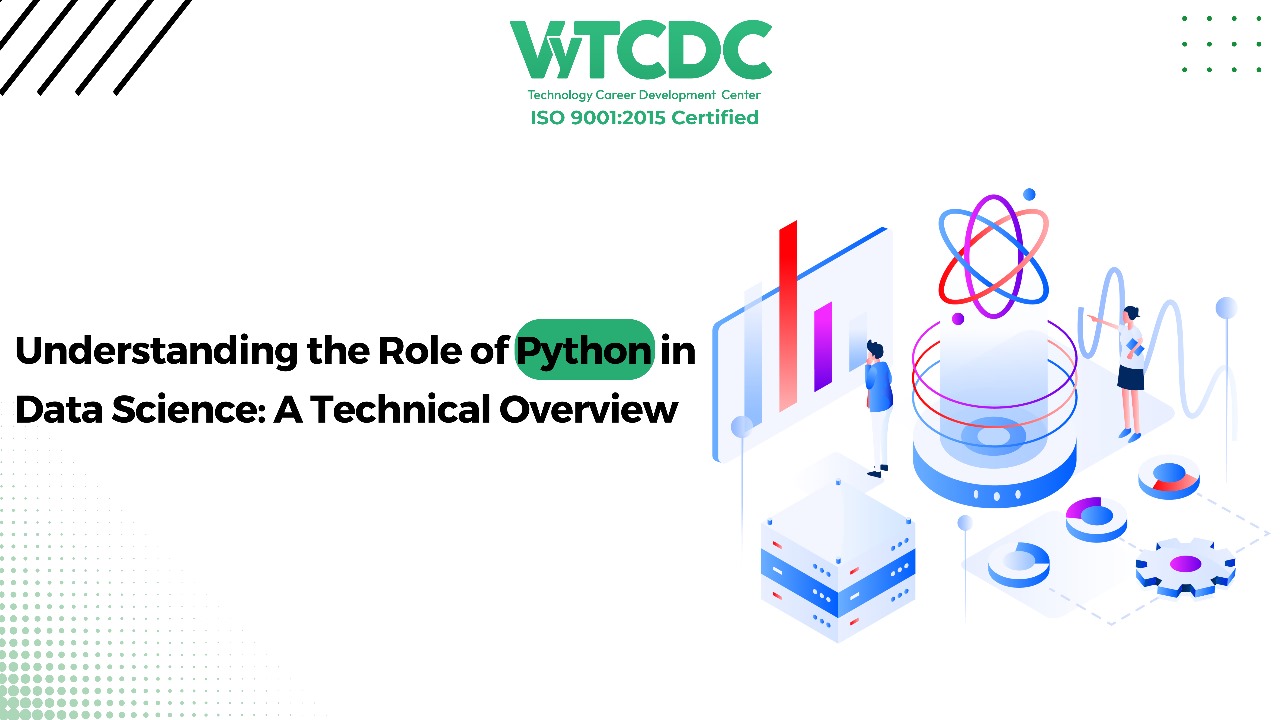Introduction
Assume you’re preparing to set out on a journey across a dense, unexplored jungle. The path ahead is fraught with twists, unknown paths, and buried secrets. To navigate this rugged terrain, you require more than intuition; you need a trustworthy guide. In the world of data science, Python serves as a compass, guiding you through the tangled wilderness of data, assisting you in making sense of it and uncovering valuable insights.
In this blog, we will examine Python’s role in data science courses in depth, including how it handles data, conducts sophisticated computations, builds machine learning models, and creates insightful visualizations.
Fun Fact: Did you know Python was named after the British comedy series Monty Python’s Flying Circus? Its creator, Guido van Rossum, wanted to give the language an approachable and playful name!
Python is intended to let you concentrate on the problem-solving parts of data science courses rather than becoming bogged down in technical syntax. Python’s versatility and ease of use make it an obvious choice for managing massive datasets, developing machine learning models, or visualizing insights.
Navigating the terrain: Key Python Library for Data Science:
Data science is divided into layers, each of which requires its own set of tools. Python has a number of libraries, each with a specific purpose, similar to the specialized tools that an explorer may bring to overcome various problems in the wilderness.
NumPy: The Map of Numerical Data:
NumPy is Python’s fundamental library for numerical operations. In data science, it serves as a map, offering structure and tools for navigating an enormous quantity of numerical data. It supports multidimensional arrays and matrices, allowing sophisticated mathematical operations on big datasets to be performed seamlessly.
Fun Fact: NumPy’s arrays are so efficient that they can store data in as little as 1/8th the space used by native Python lists!
Pandas: The Trail Guide to Data Manipulation
Pandas is the library that manages data modification and analysis, serving as a trail guide for structured datasets. It introduces data structures such as DataFrames (two-dimensional tables) and Series (one-dimensional arrays) to help with data cleaning, sorting, filtering, and transformation.
Fun Fact: The name Pandas is derived from “Panel Data,” but other people say it’s because the library makes interacting with data as simple as cuddling a panda!
Matplotlib and Seaborn: Binoculars for Data Visualisation
Matplotlib and Seaborn, like binoculars, help you display your data, exposing variations and patterns that may not be visible at first glance.
It is a general-purpose visualization library that allows you to make static, animated, and interactive plots.
Fun Fact: Matplotlib was developed with the plotting features of MATLAB, a popular software among engineers and scientists. It was created to provide similar functionality to Python!
Seaborn makes this process easier by adding analytical context, allowing for the creation of relevant and visually appealing data analysis graphics.
Automation in Data Science with Python: Constructing Efficient Pipelines:
Python also plays an integral part in data science automation. Like a well-oiled machine that handles repeated operations, Python may automate time-consuming data science activities.
Fun Fact: Python’s automation capabilities have resulted in widespread application in fields such as banking, where it automates trading processes.
Python and Big Data: Navigating Massive Databases:
Python demonstrates its capability to handle massive datasets efficiently. When presented with data that is too vast to manage on a single machine, Python provides tools such as Apache Spark, which enables distributed data processing over numerous systems.
Fun fact: Netflix utilizes Apache Spark to recommend TV episodes and movies based on customer interests. With the capacity of distributed data processing, it can evaluate billions of user interactions in real-time!
Python and AI: Charting New Frontiers:
Python also performs well in artificial intelligence (AI) applications. Libraries like TensorFlow and Keras put Python at the forefront of deep learning, enabling data scientists to create neural networks capable of performing complicated tasks such as image recognition and natural language processing.
Fun Fact: Google’s TensorFlow is a famous Python library for machine learning and deep learning, with applications ranging from recommendation systems to self-driving cars!
Conclusion: Python, Your Compass for Data Science:
Python serves as a dependable, versatile, and powerful compass in the undiscovered adventure of data science training programs. It guides you in the correct path, making it easier to acquire data, analyze it, and construct models. Whether you’re an expert data scientist or a newbie to the industry, Python gives you everything you need to delve into data, find insights, and make informed decisions.
With Python, the path to data science becomes less intimidating, and each step ahead brings you closer to identifying the hidden treasures within your data.
Established in 2002, VyTCDC has been vy ventures’ premier technology incubator since 2002. It offers transformative technical training and internships across its specialized entities.
Contact Us:
Phone
+917338811773
+918925903732
Email: careers@vytcdc.com






